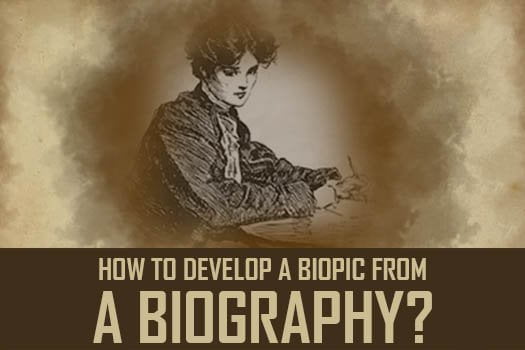HOW TO DEVELOP A BIOPIC
Biopics have been in great demand in India during last few years and most of them have done huge box office collections in the past few years. The reason is very evident, Indian audience have matured as viewers and every biopic has some lesson to tell at the end which inspires and creates a direct connect with the audience. Indian directors and producers are in continuous search of such real stories which can be converted into biopics.
If you or your known one’s have done something great, it can be a wonderful idea to write a story about them which can be converted into a biopic, if it is appealing enough.
But the main question is –
HOW TO DEVELOP A BOPIC FROM A STORY OR BIOGRAPHY?
Writing a biopic – a screenplay on some someone’s life can be one of the greatest experiences a writer can have. It does not matter whether a person is famous or not; the story should have some substance, some great experience worth sharing and some great message for the society. If you have always wanted to write a biopic, then here is the guide to get started:

The very first step is to find the name of the biopic according to the subject – the person on whom the story is based must be legally available to you. It’s always advisable to take legal permission, unless you are writing your own story. Covering the entire life of person in just 150 minutes would be a tough task, so you must identify the important parts of the subject’s life. Examples can be taken from the famous Bollywood Movies like – MSD – The Untold Story, Dangal and Bhaag Mililkha Bhaag, all these stories have emotionally portrayed the events that led the subject to the winning moment , mixed with various tragic moments, depicting their struggle to achieve the same.
These are some steps which you follow :
- WRITE A SYNOPSIS
Write down all the events that you think are appealing as a story teller and you wish to cover in the screenplay. The synopsis should be long enough, initially it would be quite mingled as some of the incidents might not have the correct context or direct relation, but later on, as a story teller, a connecting thread has to be established. The story must been clear as a whole before converting it into a screenplay. The main aim of the synopsis is not to restrict or censor the incidents. It must be written in a simple language citing the incidents one by one. The story can be compressed and unimportant incidents can be removed later but it has to be elaborated initially while writing the synopsis.
- READ THE SYNOPSIS ALOUD TO SOMEONE
Once the synopsis that has the entire story is done, try reading that aloud; be a story teller and read it for someone who can listen to you sympathetically or to someone who has interest in listening to stories. To reach to the right conclusion, do not read the story to someone who already knows the incidents or the subject’s story. By reading it aloud, you will yourself understand the mistakes you might have made and you can also see if the listener is able to understand the story or not. Audience connect is important right from the screenplay itself. If the story is not interesting enough, it won’t be able produce a good screenplay or a biopic.
Do read that aloud every time after making the changes until you yourself satisfied with the storyline. At this stage, do not think of the story fitting into a screenplay. Once it is completely ready to be presented to the audience, plan for the next step.
- CREATE A STORYLINE – AN OUTLINE OF THE STORY AS A FILM
This is going to be the final job before your screenplay is ready. Now you have to shape up the story – the structure of the film. The synopsis has to be converted into 3 major parts – there is software which makes your task simple and can help you in preparing the structure: http://www.movieoutline.com/
The Mythic Journey Map is a great approach for doing this –It is actually a narrative technique where the entire story molded in 12 clear plots, it is a very famous style for featuring long films. The story should then have a three act structure which has its own importance to keep the audience connected with the story
ACT I – BUILDING UP THE CHARACTER
Here the subject’s character is built up showing his / her past life
ACT II– UNFOLDING THE TRAGIC EVENTS
This creates the emotional connect with audience where they start finding themselves in that character. It will cover the character’s tragedy or nightmare, which motivates him / her to set the life goal or take the resolution.
ACT III – CLIMAX –Success of the Character / Defeat of the Villain
ACT II will start showing the struggles of the subject and will continue showing hurdles of his/her life and how the subject struggles to achieve the ultimate goal which is a landmark.
The main key of a strong story plot is the connection of the events, and how these acts can be interchanged to create suspense, if needed. Once the storyline is created, reading that again will make it clearer and once you are satisfied, you are ready to go for your first draft of the biopic!
If you have a story of your own and you want a biopic to be made on that, you can hire screenplay writers in India or also you can involve a ghostwriter in India, who can assist you in getting your biopic done. If you have your biography and you want to get a film made on that, you can always hire a freelance writer or a ghostwriting agency to help you achieve the script dreams are made of!






